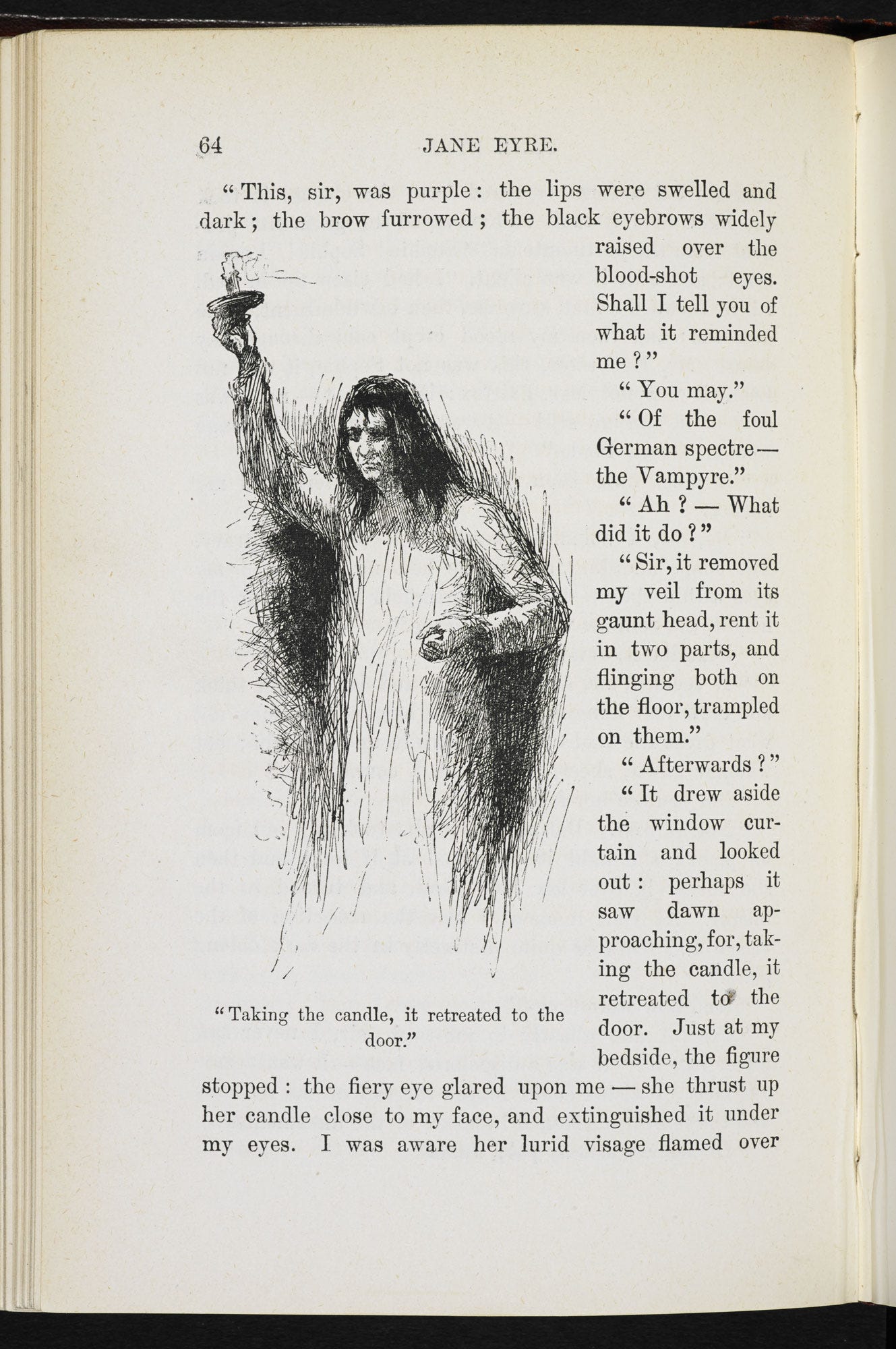Ghosts are usually pale, Jane
Summer is starting to feel like Manderley on fire here in Texas! Luckily, ghosts usually bring a chill to the air, so let’s dive into another edition of the Gothic Grotto, shall we?
This week I’m covering a topic that needs to be addressed early on because 1) it’s important and necessary that I do and 2) it’s a topic that will come up time and time again and that is racism within Gothic fiction. Like I mentioned last time, Gothic fiction critiques what the author views as a social ill, and for Victorian England much of that criticism was aimed at the “other,” i.e., anyone who wasn’t white, straight, and British. Dr. Maisha Wester from the University of Sheffield provides an excellent breakdown of common Gothic tropes and how several of these tropes are steeped in anti-Blackness.
The Empire Strikes (Again)
Dr. Wester’s point that Gothic characters go to places they shouldn’t and have an evil follow them home is especially prominent in novels that fall within the imperial Gothic category. These novels show the (unnecessary) fear and unease the English had toward the rest of the British Empire. Popular imperial Gothic novels include Bram Stoker’s Dracula, Charlotte Brontë’s Jane Eyre, and more explicitly, Joseph Conrad’s Heart of Darkness.
In Jane Eyre, Mr. Rochester has a pretty big secret. Though it was published nearly 200 years go…Spoiler Alert: he’s keeping his wife locked away in an attic. While the 2011 and 1997 films portray Bertha Mason as a white woman, the character is implied to be multiracial and of Jamaican descent. (The 2006 BBC series cast Claudia Coulter who was born in Honduras as Bertha, which feels like they went “eh, close enough.”)
After they wed in Jamaica, Rochester is disgusted when he learns that Bertha’s mother (who is described as Creole) was a “madwoman and a drunkard” and claims that Bertha inherited both traits. He brings Bertha back to England and keeps her locked away to “shelter her degradation with secrecy.” Bertha frequently escapes her isolation and is revealed to be the cause behind the mysterious events happening in Thornfield. In other words, Bertha is the “evil” that followed Rochester home after he traveled to a place he shouldn’t have. She is the warning of what might be “lurking” in the other parts of the Empire.
“Jane Eyre makes extensive use of two popular stereotypes regarding the British Empire: it is a place where great fortunes may be made, but often at grave risk to British bodies, minds and souls.” -Suzanne Daly
Meanwhile, Dracula emphasizes the fear of a disillusioned society that Dr. Wester identified. Miscegenation, and the fear of it, is made symbolic with Stoker’s vampire. Dracula himself is an “other,” and he brings an impurity to the English through the process of turning a human into a vampire. Dracula has the double blow of villainizing queerness as well.
From Harriet Jacobs to Toni Morrison…
The Victorians may have used the Gothic for racist fearmongering, but the genre can still be a useful tool to identify the real horrors of society. In 1861, Harriet Jacobs used Gothic elements in her narrative to detail her experiences as former enslaved woman revealing the grotesque to her audience. Jacobs’s narrative laid the foundation for the Black Southern Gothic genre.
The writings of Alice Walker, Octavia Butler, Zora Neale Hurston, and Toni Morrison all exemplify the genre of Black Southern Gothic and its expansiveness. I highly recommend reading Krista White’s article, “Black American Gothic: A Southern Herstory of Black Magic Women” in full. She perfectly captures the historical importance of the genre and shares her own personal connections to it as a Black queer woman.
…to Today
Kaylnn Bayron, author of Cinderella is Dead and the This Poison Heart duology, wrote an amazing piece for Tor, “How Marginalized Authors Are Transforming Gothic Fiction,” that explores what happens when those previously excluded from the Gothic canon (aside from allegorical mentions) are centered and take up space. (Again, highly recommend reading the article in full.) Bayron demonstrates how Black writers, writers of color, and queer writers have been navigating a genre that previously used their identity as metaphor for the worst horrors society has to offer:
“People from historically marginalized and excluded backgrounds know all too well what it means to have our humanity stripped away from us and as we gain more traction in the gothic genre we will do more than find bits and pieces of ourselves, we will find ourselves whole, made so by the telling of our own stories.” -Kaylnn Bayron
For more
Jane Eyre is available for free on Project Gutenberg as is Dracula and Harriet Jacobs’s narrative, Incidents in the Life of a Slave Girl.
Interested in reading Black Southern Gothic? Try The Color Purple by Alice Walker, Fledgling by Octavia Butler (great for vampire fans!), Beloved by Toni Morrison, and Their Eyes Were Watching God by Zora Neale Hurston.




